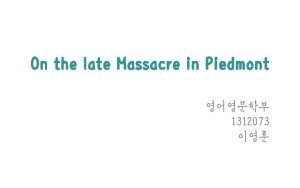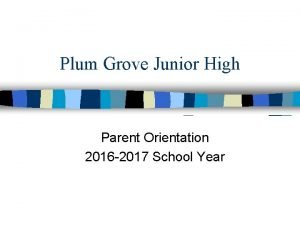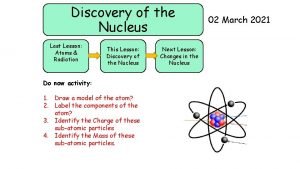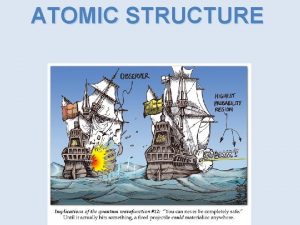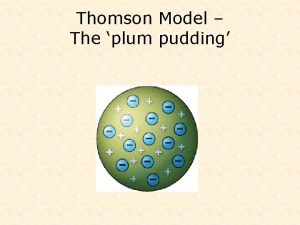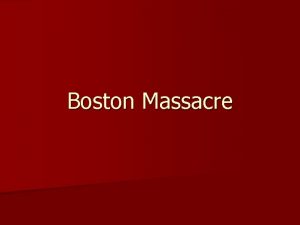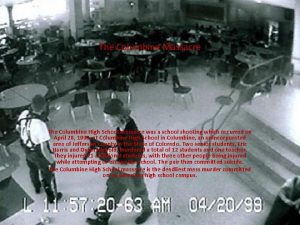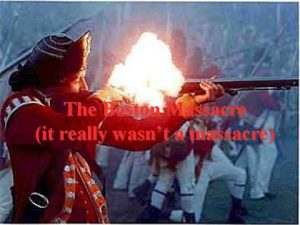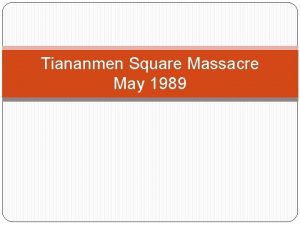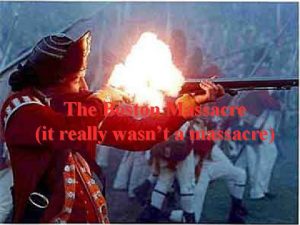John Jenkins and the Plum Creek Massacre Curtis










- Slides: 10

John Jenkins and the Plum Creek Massacre Curtis Blanchard

In May or June of 2014, I was reading through a history of my great-great grandpa John Jenkins (9 May 1845 -19 Dec 1936) compiled by Eldon R. Griffin which details among other things Grandpa’s 7 trips across the plains as a pioneer and an over-and-back boy in 1863, 1864 and 1866 helping other LDS emigrant trains travel to Utah. • I happened upon a section that quoting a newspaper article said, “In 1865, the Indians being very hostile, the church sent to trains back, but in 1866 I went again, this time with Captain Horton Haight. The south Platte at Julesburg, where we crossed was three-fourths o a mile wide, and we ferried our stuff over by caulking the wagon boxes and lashing four together. After about four hours of milling around, and with the help of the entire company, go the cattle started across. The captain called for volunteers and eight of us who volunteered followed them swimming behind to keep them going. We were in the water for about six hours before we got them across. At the time there were about 500 trains of outsiders headed West who were unable to cross. When we started back we were loaded with emigrants and wire. Some apostates placed an attachment on the wire after ti was loaded and a lawsuit followed, which was merely a scheme to hold us back until we could not get through the mountains for snow. At Fort Kearney our train was held up for some time. The officers said to was not safe to proceed, but we were allowed to go on by traveling with two trains together, making 150 teamsters, all armed, besides the emigrants. When we got about 25 miles west of Fort Kearney I was driving the lead wagon, as I usually did. We came to a trading station called Plum(? ) Creek, and I saw a man lying stretched across the road dead, with a double barrel shotgun across his chest and two buckets of alcohol by him. The Indians had killed him. We camped nearby or the night and some men were detailed to bury the man. Next morning after driving about five miles we found eleven men who had just been killed by Indians, their twelve wagons burned, and a woman and two children were carried away by the Indians. Coming on West we camped on the bank of the Platte River by a knoll and that night we could see the Indians on a knoll and hear them splashing, fording the river all night. No one in camp slept that night. The next morning the Indians were all gone. That day the Indians were going north on the other side of the river and we were going west. That was the last we saw of the Indians on the trip “ (John Jenkins, “Pioneer Tells his story”, Cache Valley Herald, Wednesday, June 22, 1927; John Jenkins, 82 writes interesting of early days in the west. )

Personal Conection This was very interesting because Plum Creek is only about 20 miles from where I live, and I’d seen signs just south of Lexington about an old massacre site when we were watching the Eagles in the winter time. Also Fort Kearny is not much farther away, and about a month previously the boys and I participated in a Civil War Reenactment there. In June I was able to go to a girl’s camp near Lexington to share a spiritual thought in my capacity of Branch President in the Church of Jesus Christ of Latter-day Saints and was on a spiritual high and not at all ready to go to bed even though it was dark and late, when I got done. I decided on a wild hare to look for the massacre site, even though it would be well past midnight when I would get home, and I would be on dirt roads in unknown very sparsely populated territory to find it. I knew with my busy schedule at work, church, with scouts and my family that finding another time to do it would be difficult, so I started off. I ran into a sign as I’d remembered south of Lexington. I followed the sign and others that followed across a meandering path of dirt roads through fields and along the south side of the Platte River until I came to a massacre gravesite, the site of the stockade that watched the Plum Creek Massacre in 1864 happen and eventually the actual massacre site. There was also a marker along highway 183 commemorating the famous massacre and hinting at others as well. That was cool, but then the next week I saw that they were writing a book about the Plum Creek Massacre and all related things because this was the 150 th anniversary of it. Coincidence? Doubtful…

More Information

The family (Grandma Elmina’s Grandfather’s family)

A plaque we drive by every time we go to Kearney

Yet another plaque I found on the trip

Reenactors from the period at Fort Kearney You might recognize some of the soldiers if you look closely… In any case, I hope you enjoyed this little piece of local family history that kind of grabbed me… Feel free to share with any Jenkins family that might be interested… I attended a “reenactment of the massacre” at a local museum and they were VERY interested in the information Eldon put together and made kind of a bit deal that we had that kind of a local connection. Anyway I’m including the program from that so if anyone wants to order the book they can…

Interested in more information?

Order form if anyone is interested

